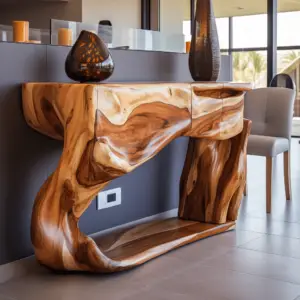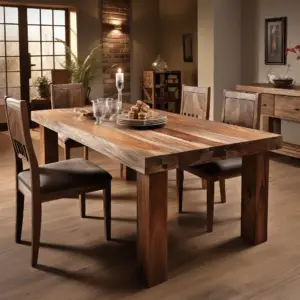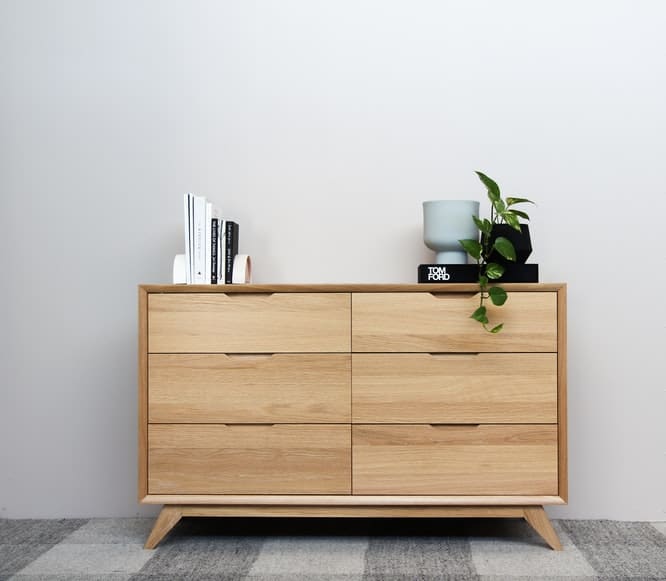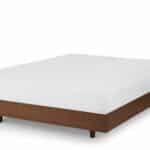The mango tree, from which we derive mango wood, is a populous tree the world over, thriving in hot humid climates, specifically tropical regions. The tree is originally believed to have come from within regions of India and Bangladesh.
Mangifera Indica as it is known scientifically is typically cultivated for the production of the mango fruit and can grow to a height of over 30 meters sporting a trunk as wide as 4 meters. The mango tree is today cultivated all over the world with cultivars numbering over 300.
The mango tree is a hardwood that grows comparatively fast towering at 100 feet within approximately fifteen years. Some hardwoods take up to 50 years to 100 to reach maturity making the mango tree a fairly good source of timber.
The mango tree is only used for timber when it has stopped producing fruit. The trees are usually taken down for timber, but they were originally used as firewood. Woodworking has becoming increasingly popular with this tree.
As with every type of wood, there are both advantages and disadvantages to it. Below are some pros and cons of mango wood furniture.
Table of Contents
Mango wood furniture pros and cons: Pros

Mango Wood Sustainability
Unlike many other trees, especially slow-growing hardwoods, the mango tree is plentiful the world over and is not in danger of depleting in the foreseeable future. Its fairly quick development and the fact that it is aggressively cultivated for its fruits has ensured that the trees are in huge supply.
The lumber sector is one of the most notoriously unfriendly industries with regard to endangered and threatened species of trees. The practice of using mango trees for furniture has taken the pressure off of threatened species allowing them to replenish their numbers.
This is possibly its most significant advantage given the prevailing dangers associated with gutting down our ecosystems, that we are experiencing today.
Sustainability is one of the primary advantages of Mango wood. Due to its cultivation as a fruit tree, Mango wood is highly sustainable. The trees grow relatively fast for hardwood and reach maturity after about 15 years. At this point, they reduce their fruit production or cease altogether.
Before mango trees stop producing, new ones are planted every 7–15 years. Cutting down less fruitful trees to make wood creates a sustainable plantation and harvest cycle.
Hardness and Durability
Mango wood is a hardwood and its lumber is remarkably good for the manufacture of wood items. Depending on the specific species, the approximate Janka hardness rating for mango wood is 1070 to 1100. This is a dense hard plank that makes for durable strong furniture.
Mango wood furniture lasts 15–20 years if well-maintained and given a fresh sealer or finish to prevent fading as it ages.
Easy to Work and Process
Mango wood is usually ready to be made into wood products after harvesting, with some trees requiring just little drying, seasoning, and preparation. This considerably reduces effort in preparing wood for woodworking.
Many hardwoods and softwoods cannot be worked so soon after harvesting due to high moisture content, making them practically impossible to cut, nail, or sculpt.
Mango wood is hard but easy to work. Especially if the wood has a straight grain, however certain mango trees have interlocking grains that require various tools for boards.
Mango wood furniture takes very well to stains and finishes and when done thoroughly, these protective coatings provide even further durability to the furniture pieces.
Visually Appealing
Wood is almost always appealing though some trees have significantly arresting color palates than others. Mango wood furniture is one of these. Mango wood has a range of colors from light to darker browns and tans.
Different species can sport pink hues and yellow tones making mango wood furniture visually interesting.
Its colors also lend it better to carvings, sculpting, and decorative artwork. Musical instruments are also often made from mango tree furniture due to this quality.
Is a Pocket-friendly Option
The mango tree is available in sufficient amounts worldwide making it cheaper to acquire for dealers in timber and wood. While the misconception may be that it is inferior due to its low price point, the cost is only due to a steady supply which in some cases could be an oversupply of the raw material.
Some slow-growing species such as red maples or Japanese maples are much more expensive compared to mango wood furniture. Their unavailability is the main reason they are more expensive and yet mango wood furniture has superior hardness and durability.
It would be wise to take advantage of the lower price point to get yourself some elaborate furniture pieces that would otherwise be unaffordable if they were made of a different kind of wood.
Mango wood furniture pros and cons: Cons

Susceptible to Fungus and Infestation
Mango wood is a tropical tree and tropical regions tend to be teeming with life. On average mango wood is susceptible to fungus more than most hardwoods and can be infested with woodworms if left untreated.
Most infestation occurs during its time in timber yards after harvesting and before woodworking or processing which can cause great losses and leave furniture unsightly to make into furniture pieces.
Finished pieces should always be treated with appropriate chemical applications to ensure spores do not end up destroying the furniture with time. Protection such as stains and finishes are especially important if you wish to give the furniture a chance at longevity.
Finishes should also be reapplied if they have faded over time to prevent fungal growth and any other damage from water or heat.
Can Cause Allergic Reactions
Working with mango wood can cause dermatitis. Always wipe mango wood dust from the skin after sawing to avoid skin-irritating residue.
Untreated and untreated mango wood secretes oils that might cause allergic reactions, so work on it with gloves and overalls to minimize dust.
Is Mango Wood Good for Furniture?
Mango wood is perfect for making furniture due to its amazing characteristics that make it versatile, meaning it can make furniture for both outdoor and garden furniture, such as:
Water resistant– The ability of Mango wood to resist water to a great extent makes it perfect for making patios, decks, or any other kind of outdoor furniture. You can improve its durability by polishing it.
Great designs- Due to its softness and pliable, it is pretty easy to carve and shape, unlike other hardwood types. It is a great material for carving designer furniture because it affords elaborate carving designs.
Sustainability– Mango wood has risen to popularity as a furniture wood because of its eco-friendly property, thus becoming a favorite among manufacturers looking for green or sustainable options.
Strong and lightweight– These properties make it conveniently used for big furniture like table sets, display units, kitchen cabinets, and display units.
After Mango trees reach maturity, they are used as a durable furniture material, making Mango trees one of the most sustainable choices of wood.
In terms of quality, Mango is of higher quality compared to the pain and acacia wood.
Mango Wood Durability
Mango wood is a durable hardwood, thus suitable for making bespoke furniture designs. Its strength is comparable to Ash and Oak. The wood doesn’t wear out quickly with proper care. It can retain its high luster texture for years, assuring you that your furniture will last longer.
Is Mango Wood Furniture Expensive?
Mango wood is available in many countries, making its sustainability more affordable than other hardwood counterparts. It requires minimal processing, which contributes to keeping the costs down.


